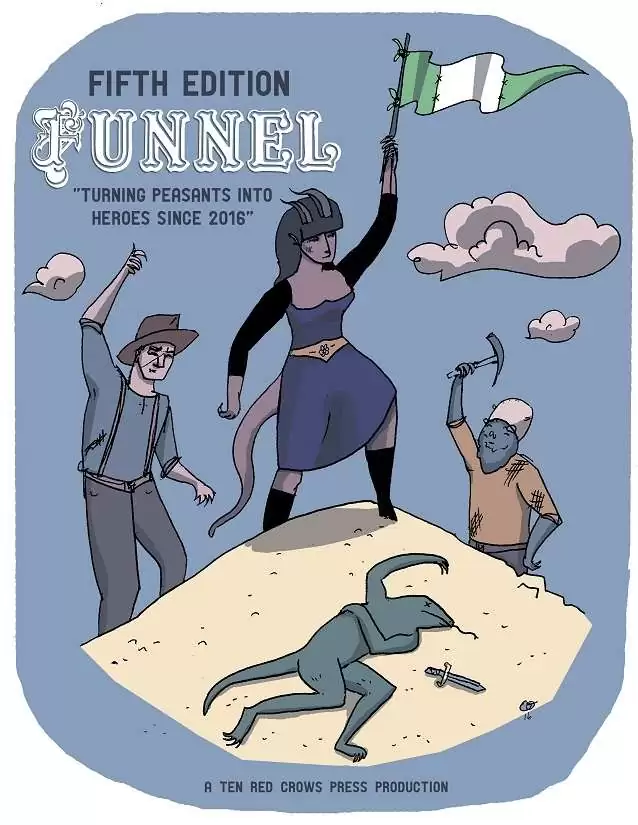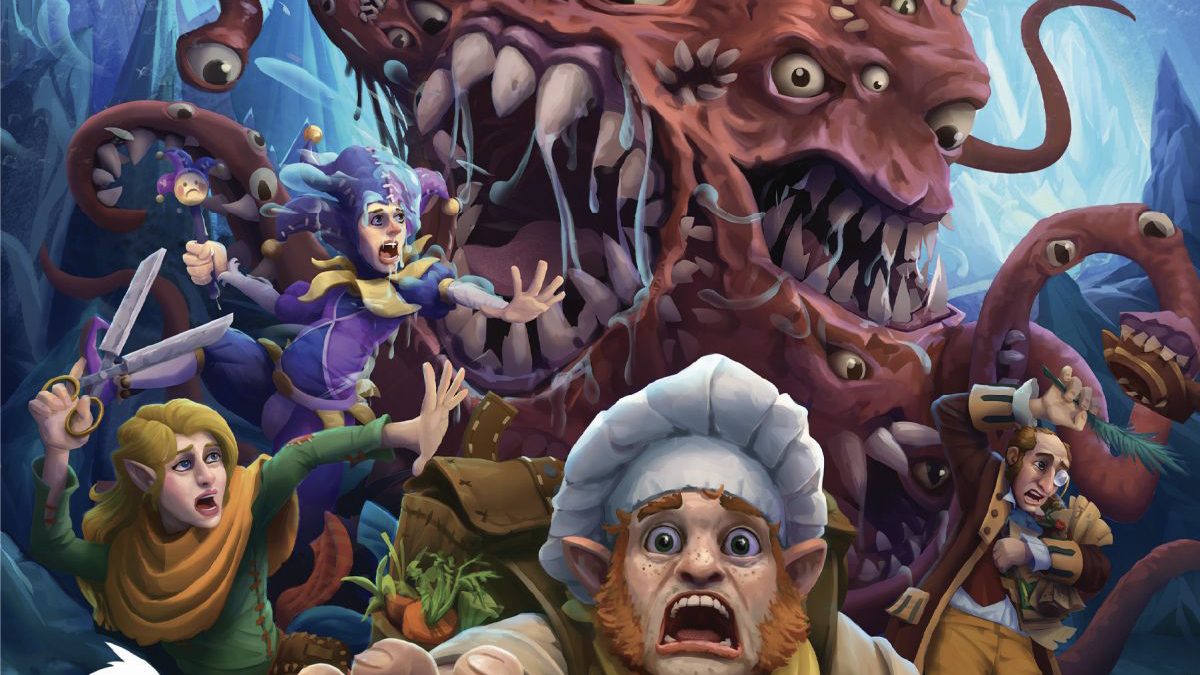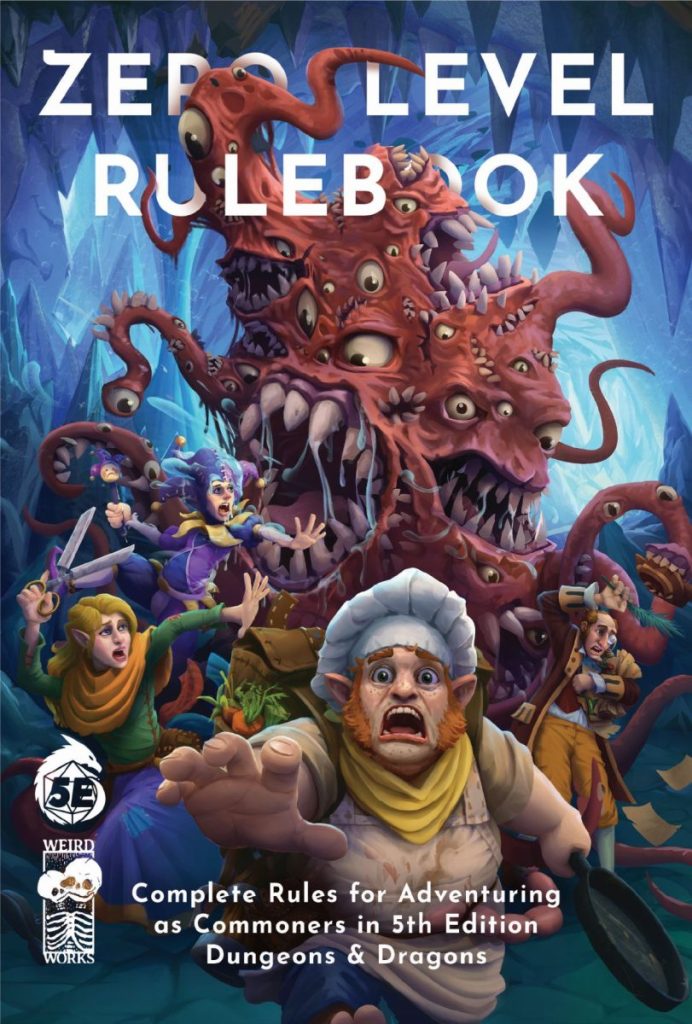Dungeons & Dragons campaigns often start with epic heroes, but what if you began with humble peasants facing terrifying odds? That’s the essence of the zero level D&D funnel, a thrilling and unpredictable way to kick off your 5th Edition adventures. This unique approach, inspired by Dungeon Crawl Classics (DCC), turns character creation into an exhilarating gauntlet where only the cleverest—or luckiest—survive to become true adventurers.
Watch the Video | Buy TTRPG Books and Accessories | More Game Content
What is a Zero Level Funnel?
A zero-level funnel, also known as a “meat grinder” or gantlet, is designed to make character creation dynamic and surprising. Instead of rolling up one character, each player in a party of 4 to 6 rolls up 3 to 4 characters. This means you’ll have a group of 12 to 24 average peasants, armed with little more than their wits, crammed into a dungeon. The goal? See who makes it out alive and earns the right to become a level one adventurer. It’s a stark departure from traditional D&D beginnings, emphasizing survival over balanced encounters.
Resources like the Zero Level Rulebook from Weird Works and Fifth Edition Funnel from Ten Red Crows Press offer streamlined rules, simplified character sheets, and numerous random tables to help you implement this high-stakes character generation method.
Rolling Your Zero-Level Character

The heart of the zero level D&D funnel lies in its randomization. While you can offer players some choice for their race, it’s generally recommended to leave everything else to chance.
Step 1: Determine Your Race
Start with a d100 roll on a race table. This ensures a diverse and often humorous group of starting characters. For example, a roll of 94 on the Zero Level Rulebook race table might yield a half-orc. You’ll then apply standard racial abilities like size, speed, languages (Common and your race’s language), and ability bonuses. If you roll a Dragonborn, a Dungeon Master might consider limiting breath weapons at this stage, allowing only color and damage resistance, as breath weapons can be overpowered for a zero-level commoner.
Step 2: Roll Your Attributes
Forget standard ability score generation (rolling 4d6 and dropping the lowest). For a true D&D meat grinderexperience, you’ll roll 3d6 for each stat in order: Strength, Dexterity, Constitution, Intelligence, Wisdom, and Charisma. Randomness is key here; don’t pick and choose where scores go. For example, a character might end up with scores like:
- Strength: 10 (+1 modifier)
- Dexterity: 13 (+1 modifier)
- Constitution: 15 (+2 modifier)
- Intelligence: 10 (+0 modifier)
- Wisdom: 8 (-1 modifier)
- Charisma: 6 (-2 modifier)
After applying racial modifiers (e.g., a half-orc gets +2 Strength and +1 Constitution), your half-orc might have a Strength of 12 and a Constitution of 15. Hit points are also rolled with a D4, plus your Constitution modifier. A roll of 2 on a D4 combined with a +2 Con modifier would give you 4 hit points – emphasizing just how fragile these characters are. Your armor class will likely be low, such as 10 plus your Dexterity modifier (e.g., 11 AC), and your proficiency bonus will be a flat +2, with no specific skills or saving throw proficiencies to start.
Step 3: Discover Your Occupation
This is where your character’s unique (and often bizarre) origin story begins. You don’t write a backstory; the funnel is their origin story. Dungeon Masters should provide a d100 occupation table. Each occupation provides a simple weapon and an item related to their trade. Imagine playing as the world’s strongest herbalist or a genius gong farmer (someone who digs up poop!). While some rulebooks offer stat-based occupation tables, rolling randomly adds to the fun and unpredictability. The DCC Quickstart rules (page 5, or page 22-23 of the DCC core rulebook) provide an extensive list of occupations. If an occupation is race-specific, you can either drop the racial descriptor or re-roll.
Leveling Up After the Funnel
If one of your commoners survives the zero level D&D funnel, they’ve earned their stripes! Leveling up is straightforward:
- Subrace: Choose a subrace and add its features and ability bonuses.
- Class: Select a class, adding first-level hit points to your character’s max zero-level hit points.
- Background: Choose a background. The Zero Level Rulebook offers a specific “commoner” background for this. You’ll also gain proficiencies, traits, flaws, bonds, and languages.
- Ability Score Boost: Boost your ability scores. Options include rolling a d6 for each stat and adding 1 on a roll of 1-3, or 2 on a roll of 4-6; or distributing 5 ability points as you see fit.
DM Tips for Running a Zero Level Funnel
Running a D&D meat grinder requires a different mindset than a typical campaign.
- Use a Level One One-Shot: While these are designed for stronger characters, the sheer number of zero-level peons (12-24 per party) can balance things out. You may need to modify a few elements, but many free or inexpensive mini-dungeons can work perfectly.
- Embrace Character Mortality: These characters have very few hit points (often 4 HP). They are likely to die, and that’s the fun! Don’t be afraid to throw powerful monsters at them. The goal isn’t a fair fight; it’s survival of the fittest. Remind players that running away is always an option.
- Streamline Initiative: With so many player characters, individual initiative rolls can slow things down. Have each player roll initiative once for all their characters and use their highest modifier. Each player then runs all their characters’ actions during their turn.
- Consider DCC Funnel Modules: The Zero Level Rulebook offers rules for converting DCC funnel modules to 5e. Adventures like “The Portal Under the Stars” from the DCC Core Rule Book or “Hole in the Sky” can provide excellent starting points for your campaign.
Watch the Video | Buy TTRPG Books and Accessories | More Game Content
Have you tried running a zero-level funnel in your D&D games? How did it go?
If you purchase any products linked on our website, we may receive an affiliate commission.


